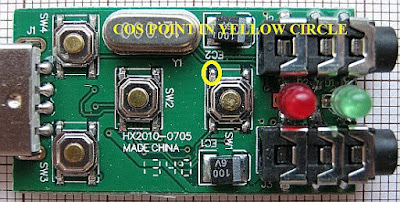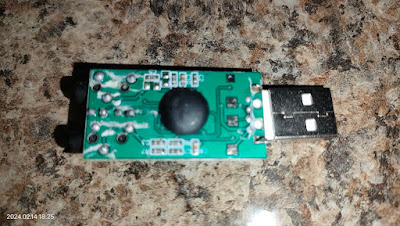It is done and dusted .......is it really?
In Part 1 available HERE the upgrading of the 145.750 Mhz Aasvoelkop Repeater Site started in all earnest with the casting of the concrete block for the 20m tower that would be installed once the block has harden and cured for a period of at least 28 days. In Part 2 you will be able to view the full upgrade taking place, the tower installation and the repeater put back into service.
The upgrade of the 145.750 Mhz Aasvoelkop Repeater Site in the Southern Cape Area was undertaken this past Sunday, 17 March 2024. 12 people were on site which included radio amateurs and non radio amateurs. The scheduled starting time to commence working was duly set and the team started working on site at around 07h00. All the necessary equipment and new tower parts were carted up to the site using 4 x 4 vehicles. Take note that the last 15 meters of the mountain peak was only accessible by climbing and carrying equipment by hand to the final site. The tower sections alone constituted 20 meters when erected. As can be seen from the images erecting the new tower was no easy feat and specialized gin-pole and winch was used to pull the tower upright. Well this could only happen after all the old equipment and old tower with antennas were taken down. In my opinion this upgrading is a two day task but the team proved me wrong.
The new tower and equipment had to be carried up the mountain top, installed and then the old tower and equipment had to be carried down the the mountain top. Very hard work and intensive labor but before the work started the men formed a circle and ask the Almighty to protect and bless the work being undertaken. It is easy to get hurt especially if so many tasks are to be performed and with 12 people onsite everyone must clearly know what is expected of him and the team. It took the team most of the day to upgrade the repeater site. Conditions were also not all that favorable. The sun literally hammered open skin areas and the wind was of real concern as a South Easterly was getting stronger as the day progressed. Thankfully in the end the team was able to lift the 20 meter large tower up into its place to great relief of all those in attendance. (See video)
Once the tower was secured it was time to setup the repeater box and all the equipment. This also took some time but soon it was time to switch the repeater back on. This must have been the highlight of the day to stand back and see the new tower and installation in its full glory. Well it was getting late in the afternoon and it was time to cleanup the site and only leave a footprint in the soft gravel here and there. Everybody returned safely to their respective QTH's, tired but completely satisfied with a task well done! Neither did some know how their body will feel the next morning when they had to get ready for a full days work. Sore and rather tired but South Africans do not let a few pains and aches get them under.
Here is a short list of some specifications of the Repeater on site:
Antenna: Diamond X510 (Two Stacked Dipoles were installed on the tower as backup antennas.)
Band: 2m and 70 cm
Gain: 8.3 dB on 2m and 11.7 dB on 70 cm
Watts: 330 w on 2m and 250 on 70 cm
Maximum Wind Resistance: 90 Mph
Height of Tower: 20 Meters
6 x Cavity Filters
Backup Battery
Solar Panel
Odds and Sods
Reception Reports: (To be discussed in Part 3 in a future posting.)
I am not going to go into full detail here as reception reports is still received on a daily basis. Wow .... Phenomenal is the way to describe the reception and transmission of this repeater after the upgrade. This repeater is in my opinion now the No 1 repeater in the Western Cape if not the whole of South Africa. I have been in this "game" for more than 30 years now an I can clearly vouch that this is the best repeater I ever worked. I will in Part 3 give a full overview of the reception and transmission of this repeater after I received all the outstanding reports. Up to now I am convinced that this 145.750 Mhz Aasvoelkop Repeater is going to reveal a few surprises in future. Mark my words!!
Finally: A big word of thanks firstly to Johann ZS1AAC for the vision and outlook to put up a repeater for all radio amateurs to use irrespective if you belong to any club or organization. Johann proudly indicated that this tower and repeater was erected for future generations in amateur radio which include all radio amateurs but also the young "Hammies". What a vision and gesture for the future of Amateur Radio. Johann we salute you!!
Now this would not have been a one man venture. To all the other radio amateurs and non radio amateurs (Unfortunately I do not have all the names) who assisted in making this repeater a reality and also for all the hard work that they put in, a big thank you! You did not only do it for yourself and other radio amateurs but for the continued existence of Amateur Radio in South Africa. What stands out is the fact that radio amateurs and non radio amateurs worked in tandem to make this dream of Johann ZS1AAC come true. The way and spirit in how this was done is clearly an example to all of us. Then there are many radio amateurs that are not able to assist in this project by means of hard labor on the mountain site but contributed by means of donating equipment and money. We all know that the installation and upkeep of repeaters are costing money. Others again contributed by way of moral support, reception reports, ham spirit etc. Johann would like to thank everyone who contributed in any way possible to the future of Amateur Radio in the Southern Cape.
This is only the beginning. I received a heads up from Johann ZS1AAC about future upgrades and installations in the Southern Cape. Watch this space!!
A special word of thanks must go to Henk ZS1AAD who was the photographer for the day and Thys ZS1TBP for forwarding the images via Telegram to me. Without the images and the videos this post would not have been possible. Dankie, Henk en Thys!
Images: Click on images for larger view.
Top image: THE TEAM!! (Click on images for larger view.)
Starting from the back row on the left side:
Mario ZS1MV, Henk ZS1AAD, Johann ZS1AAC, Eben ZS1EP, Johannes ZS1XR and Bruce (non radio amateur)
Starting from the front row on the left side:
Abrie (non radio amateur), Attie (non radio amateur), David (non radio amateur) and Henry ZS1SB
Inserted photo: Dolf ZS1DRP (Dolf took the above photo. The editor of this article inserted the photo of Dolf. Now you have a photo of THE TEAM that worked on the repeater site.)
Image: Some of the "manne" enjoying the "Vetkoek" made by Nicolene ZS1HAR before the hard work starts.
Image: Planning session before work commences
Image: Equipment that needed to be carried to the top of the mountain
Image: Old tower and Repeater Cabinet
Image: Putting base plate in position
Top 4 images: Base plate work
Images above: Tower work in progress
Above: New tower lifted and in the air.
Above images: Old and New Tower
Above image: The view from Aasvoelkop is spectacular
Below: Videos of the upgrading of the 145.750 Mhz Aasvoelkop Repeater in the Southern Cape


























































